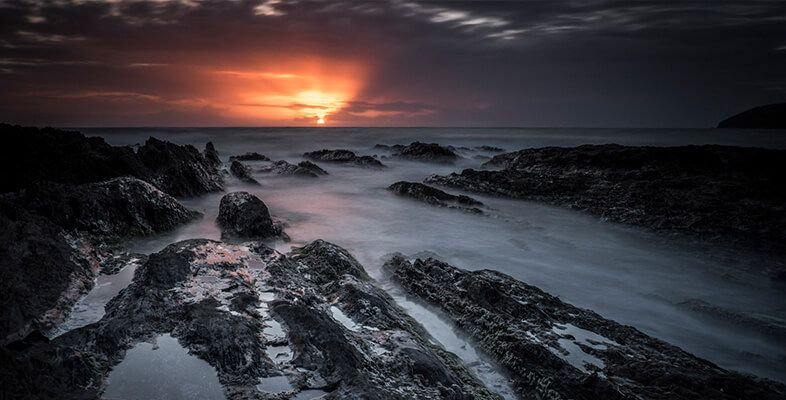Leading Lines
Leading lines are a powerful compositional tool in photography that guide the viewer’s eye through the image, creating depth and interest. By understanding and utilizing leading lines effectively, you can enhance your photographs and draw attention to your subject. This article will explore what leading lines are, how to use them, how to find them, and composition tips for creating stunning photos.
What are Leading Lines in Photography?
Leading lines are visual elements that direct the viewer’s gaze towards a specific point in the photograph. These lines can be straight, curved, or even implied, and they often lead the viewer towards the main subject or through the entire image. Leading lines can be found in natural settings, urban environments, and even abstract compositions.
Types of Leading Lines
Straight Lines: These are the most common and can include roads, paths, bridges, or any linear structure that guides the eye directly to the subject.
Curved Lines: Curved lines, such as rivers, winding paths, or waves, create a sense of movement and can lead the viewer’s eye in a more fluid manner.
Diagonal Lines: Diagonal lines add dynamism to a composition, suggesting movement and action. They can be found in architectural elements, landscapes, and more.
Converging Lines: These lines converge towards a single point, often creating a sense of depth and perspective. Examples include railroad tracks or rows of trees.
Implied Lines: These are not actual lines but are suggested through the arrangement of elements in the scene, such as a series of stepping stones or a line of people.

How to Use Leading Lines
Using leading lines effectively requires understanding how they interact with other elements in the composition and how they can enhance the overall image.
Directing the Viewer’s Eye
Leading lines should be used to guide the viewer’s eye towards the main subject or through the image in a deliberate way. Positioning the lines so they start from the bottom or sides of the frame and lead towards the subject helps create a visual journey.
Creating Depth
Leading lines can add a sense of depth and three-dimensionality to a photograph. By positioning lines to recede into the distance, you can create the illusion of depth, making the viewer feel more immersed in the scene.
Enhancing Composition
Leading lines can help organize the composition and create balance. They can also add rhythm and flow, making the image more engaging. Combining leading lines with other compositional techniques, such as the rule of thirds, can further enhance the impact of the photo.

How to Find Your Leading Lines
Identifying leading lines in your environment is a skill that can be developed with practice and awareness.
Natural Leading Lines
Nature is full of leading lines that can be used in photography. Look for rivers, tree lines, mountain ridges, or even shadows cast by the sun. These elements can guide the viewer’s eye and add a natural flow to your compositions.
Urban Leading Lines
Cities and towns offer a wealth of leading lines, from streets and sidewalks to buildings and fences. Architectural elements such as staircases, bridges, and railings can provide strong lines that lead the viewer through the urban landscape.
Abstract Leading Lines
Leading lines don’t always have to be obvious. Look for patterns, textures, and repetitive elements that suggest a direction. These can be found in both natural and man-made environments, such as a series of windows, lines in the sand, or the pattern of a tiled floor.

Composition Tips for Stunning Photos
1. Plan Your Shot
Before taking the photo, take a moment to observe the scene and identify potential leading lines. Consider how they can be used to enhance the composition and draw attention to the subject.
2. Use Wide-Angle Lenses
Wide-angle lenses can exaggerate the effect of leading lines, making them more prominent and impactful. This can be particularly effective in landscape and architectural photography.
3. Experiment with Angles
Changing your perspective can dramatically alter the effectiveness of leading lines. Get low to the ground, shoot from a high vantage point, or move around the scene to find the most compelling angle.
4. Combine with Other Compositional Techniques
Leading lines can be combined with other compositional techniques, such as the rule of thirds, framing, and symmetry, to create more dynamic and balanced images.
5. Use Light and Shadow
Light and shadow can create or enhance leading lines. Look for natural light patterns, such as sunbeams through trees or shadows cast by buildings, to add depth and direction to your photos.
6. Simplify the Scene
Removing distractions and focusing on the leading lines can create a cleaner, more powerful image. Look for uncluttered backgrounds and elements that enhance the lines rather than compete with them.
7. Practice and Review
The more you practice using leading lines, the better you will become at identifying and incorporating them into your compositions. Review your photos critically and note what works and what doesn’t, adjusting your approach accordingly.
Conclusion
Leading lines are a versatile and powerful tool in photography that can guide the viewer’s eye, create depth, and enhance the overall composition of your images. By understanding how to use leading lines effectively and practicing their application, you can take your photography to new heights. Whether you are capturing natural landscapes, urban scenes, or abstract compositions, leading lines can add a dynamic and engaging element to your work, making your photos more impactful and visually appealing.

Or Get YourMoney Back
back your money in the rare case you are not satisfied with the quality of your
damage-free pictures. Only $38 for most image restorations regardless of damage

All rights reserved.